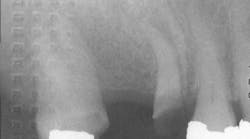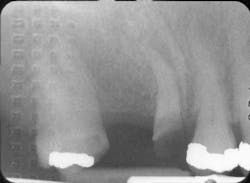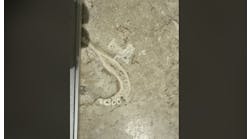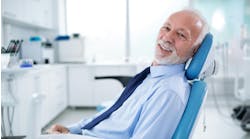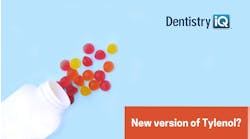By Laura Torrado, DDS, FAGDCAMBRA (Caries Management by Risk Assessment) is a growing philosophy designed to identify, diagnose, and correct dental biofilm with the final goal of restoring affected teeth to healthy function by minimizing future risks of caries recurrence. While the ADA Council of Scientific Affairs and the ICDAS (International Caries Detection and Assessment System) have given specific caries risk guidelines (high, moderate, or low), a method of assessment, diagnosis, and treatment of the disease is not yet systematic. While an attempt is being made to shift treatment to a more effective medical model, it is still mostly surgical and reparative. CariFree offers a well-documented, step-by-step process of assessment and prevention techniques for patients with different manifestation and risk levels of the disease. A questionnaire, exam, and a quantitative measure of bacterial activity will determine what type of patient we are attempting to treat. The questionnaire will reveal what habits — such as frequent snacking, acidic beverages, or use of oral appliances — might be increasing the caries risk.
Bacterial activity will be quantified with the CariScreen Caries Susceptibility Test that is done in one minute at chairside. ATP (adenosin 5’-triphosphate) bioluminescence technology, which is a test for light reaction, will measure on a scale from 0 to 9999 the levels of acid-producing bacteria by swabbing lingual surfaces of lower anterior teeth and then inserting the sample in the CariScreen meter to be read (0 to 1500 is low risk and 1500 to 9999 is high risk). ATP transports energy in all living cells, and its presence is an indicator of cellular metabolic activity. The ATP generates light once it reacts with luciferin, a light-emitting biological pigment/enzyme present in the CariScreen system and oxygen. The amount of light emission is in direct proportion to the amount of ATP and a well-known fact is that acid-producing bacteria contain 100 times more ATP than non-acid-producing strains.Once caries risks and bacterial activity are measured and assessed, a treatment plan is recommended.
If the patient is a low caries risk (readings below 1500) —
- Recommendations will focus on health maintenance like education about the cause of caries, and reinforce good dietary habits as well as oral hygiene.
- Annual recare, and rescreenings with X-rays every two or three years.
- Daily use of fluoride is suggested with the CariFree Maintenance Rinse.
- Control of pH in saliva is advised with the use of xylitol products, baking soda dentifrices, and antimicrobial rinses with low acidity. (Xylitol is an alcohol-based sugar that Streptococcus mutans cannot metabolize to produce acids.)
- Remineralization products, if necessary, are recommended such as the newer CPP-ACP toothpastes (MI-Paste). Fluoride and this calcium-based toothpaste should be used at least two hours apart because the positively charged ions in the Ca PO4 might cancel with the negative charge of the fluoride, neutralizing the effect.
- As usual, periodontal health and occlusal dental disease evaluations are made, and elective cosmetic procedures can be performed with no restrictions in the type of materials used.
If the patient is at moderate risk —
Some demineralization lesions will be present, but no caries or new restorations have been present in the past three years. There are no visible cavitation lesions and the potential for disease is in the form of white decalcification spots.
- Treatment is focused on remineralization strategies and maintenance of healthy biofilm.
- Fluoride varnishes are applied, daily use of fluoride rinses and xylitol is recommended, and pH-neutralizing toothpastes are recommended.
- Diet control reducing frequency of snacking, refined carbohydrates, fruit juices, and soda is recommended.
- Patient is educated on dental caries causes and risk factors. Recare and rescreening twice a year is recommended with X-rays every 18 to 24 months and fluoride varnishes applied at the time of the appointment.
If the patient is at high risk —
Possible inadequate saliva flow, evident cavitation and radiographic lesions, and a high number on the bacterial test will require a multiple approach and a staged treatment plan.
- The patient will be placed on a CariFree Treatment Rinse containing sodium hydroxide and sodium hypochlorite to neutralize the amount of acid-producing bacteria.
- After a month, we will retest the acidity and bacterial levels. If the number is still high, the patient will continue the “Treatment Rinse” for another month.
- Existing cavitations might be treated with debridement and glass ionomer restorations to stop the caries process. Fluoride varnish treatment and daily antimicrobial, fluoride rinses and xylitol are also used.
- Counseling on diet is reviewed as well along with oral hygiene.
- After bacterial activity is controlled and the patient is documented as a low caries risk, a long-term restorative plan is made.
- Recare and reevaluations are recommended every three months; biofilm activity, compliance, and pH levels are considered.
- A definite treatment plan will be establish once we determine that the patient is at low risk.
Laura Torrado, DDS, FAGD, graduated from the New York University College of Dentistry in 1989. She continued her postgraduate studies in full-mouth rehabilitation and fixed and removable prosthetics, as well as completed a postgraduate program in esthetic dentistry. In 2004, she completed her certification in Invisalign technologies, and in 2005 she received her Fellowship from the Academy of General Dentistry. Dr. Torrado belongs to multiple professional organizations including the American Dental Association, Academy of General Dentistry, American Academy of Cosmetic Dentistry, American Association of Women Dentists, and SAMDSNY.
ReferencesA Clinician's Guide to CAMBRA: A Simple Approach http://carifree.com/dentists/science_09/documents/AClinicalLookatCAMBRADPRAug2007_000.pdf March 2009, Douglas A Young, DDS, MS, MBA; V Kim Kutsch, DMD; Joe Whitehouse, DDSATP Bioluminescence: Quantitative Assessment of Plaque Bacteria Surrounding Orthodontic Appliances; R Sauerwein, P Pellegrini, T Finlayson, J Kimmell, I Kasimi, D Covell Jr, T Maier, CA Machida, Oregon Health and Science University, Portland, USAPlaque Retention by Self-Ligating vs Elastomeric Orthodontic Brackets: Quantitative Comparison of Oral Bacteria and Detection with Adenosine Triphosphate-Driven Bioluminescence, P Pellegrini, R Sauerwein, T Finlayson, J McLeod, D Covell Jr, T Maier, CA Machida; American Journal of Orthodontics and Dentofacial Orthopedics, April 2009Salivary biomass assessed by bioluminescence ATP assay related to (bacterial and somatic) cell counts http://www.carifree.com/dentists/science/documents/Salivarybiomass_000.pdfCell Biochemistry and Function 18, 103-108 (2000); F Gallez, M Fadel, O Scruel, F Cantraine, P CourtThe use of ATP bioluminescence as a measure of cell proliferation and cytotoxicity http://www.carifree.com/dentists/science/documents/ATPCellProliferationCrouchKozlowSlater.pdf Journal of Immunological Methods 160, 81-88 (1993); S Crouch, R Kozlowski, K Slater, J FletcherA Clinical Look at CAMBRA http://carifree.com/dentists/science_09/documents/AClinicalLookatCAMBRADPRAug2007.pdf August 2007, Dr. BC Nelson, Dr. Carson Kutsch, Dr. V Kim K
ReferencesA Clinician's Guide to CAMBRA: A Simple Approach http://carifree.com/dentists/science_09/documents/AClinicalLookatCAMBRADPRAug2007_000.pdf March 2009, Douglas A Young, DDS, MS, MBA; V Kim Kutsch, DMD; Joe Whitehouse, DDSATP Bioluminescence: Quantitative Assessment of Plaque Bacteria Surrounding Orthodontic Appliances; R Sauerwein, P Pellegrini, T Finlayson, J Kimmell, I Kasimi, D Covell Jr, T Maier, CA Machida, Oregon Health and Science University, Portland, USAPlaque Retention by Self-Ligating vs Elastomeric Orthodontic Brackets: Quantitative Comparison of Oral Bacteria and Detection with Adenosine Triphosphate-Driven Bioluminescence, P Pellegrini, R Sauerwein, T Finlayson, J McLeod, D Covell Jr, T Maier, CA Machida; American Journal of Orthodontics and Dentofacial Orthopedics, April 2009Salivary biomass assessed by bioluminescence ATP assay related to (bacterial and somatic) cell counts http://www.carifree.com/dentists/science/documents/Salivarybiomass_000.pdfCell Biochemistry and Function 18, 103-108 (2000); F Gallez, M Fadel, O Scruel, F Cantraine, P CourtThe use of ATP bioluminescence as a measure of cell proliferation and cytotoxicity http://www.carifree.com/dentists/science/documents/ATPCellProliferationCrouchKozlowSlater.pdf Journal of Immunological Methods 160, 81-88 (1993); S Crouch, R Kozlowski, K Slater, J FletcherA Clinical Look at CAMBRA http://carifree.com/dentists/science_09/documents/AClinicalLookatCAMBRADPRAug2007.pdf August 2007, Dr. BC Nelson, Dr. Carson Kutsch, Dr. V Kim K
